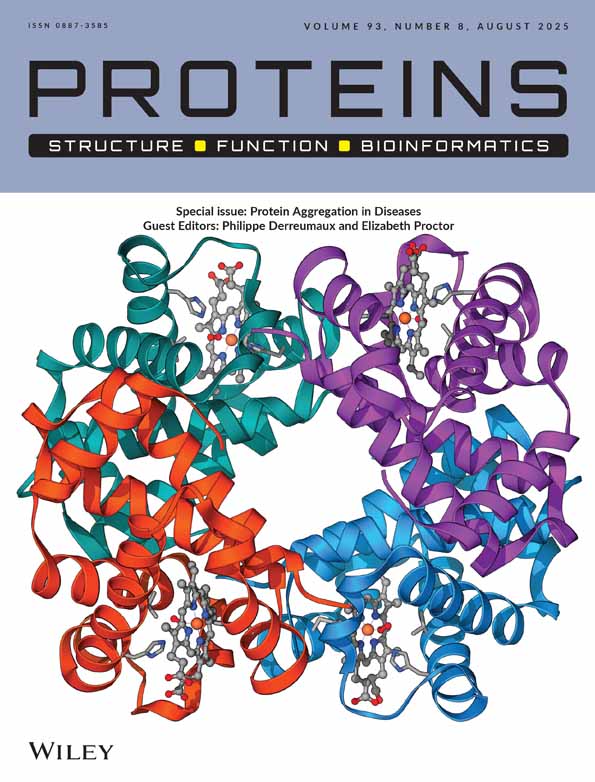Improved method for prediction of protein backbone U-turn positions and major secondary structural elements between U-turns
Abstract
A new and more accurate method has been developed for predicting the backbone U-turn positions (where the chain reverses global direction) and the dominant secondary structure elements between U-turns in globular proteins. The current approach uses sequence-specific secondary structure propensities and multiple sequence information. The latter plays an important role in the enhanced success of this approach. Application to two sets (total 108) of small to medium-sized, single-domain proteins indicates that approximately 94% of the U-turn locations are correctly predicted within three residues, as are 88% of dominant secondary structure elements. These results are significantly better than our previous method (Kolinski et al., Proteins 27:290–308, 1997). The current study strongly suggests that the U-turn locations are primarily determined by local interactions. Furthermore, both global length constraints and local interactions contribute significantly to the determination of the secondary structure types between U-turns. Accurate U-turn predictions are crucial for accurate secondary structure predictions in the current method. Protein structure modeling, tertiary structure predictions, and possibly, fold recognition should benefit from the predicted structural data provided by this new method. Proteins 29:443–460, 1997. © 1997 Wiley-Liss, Inc.




